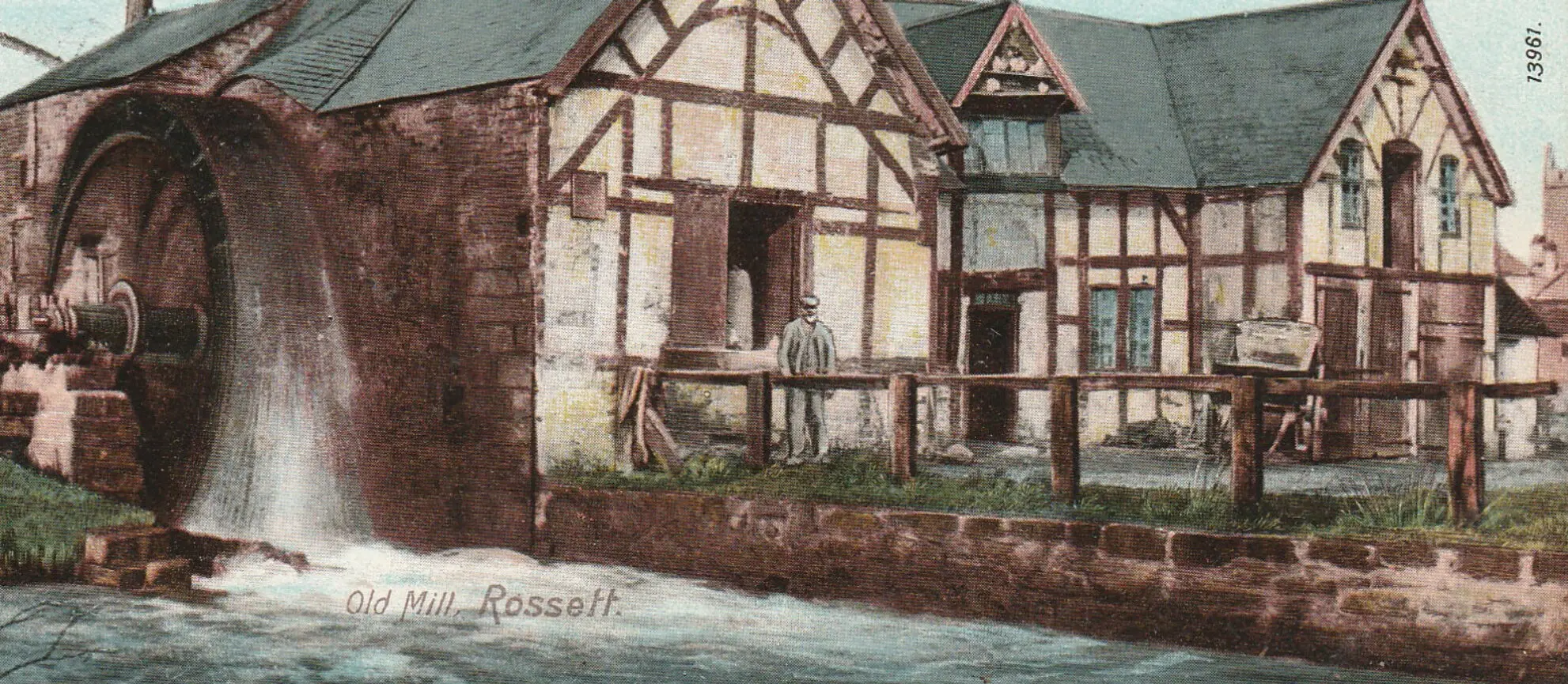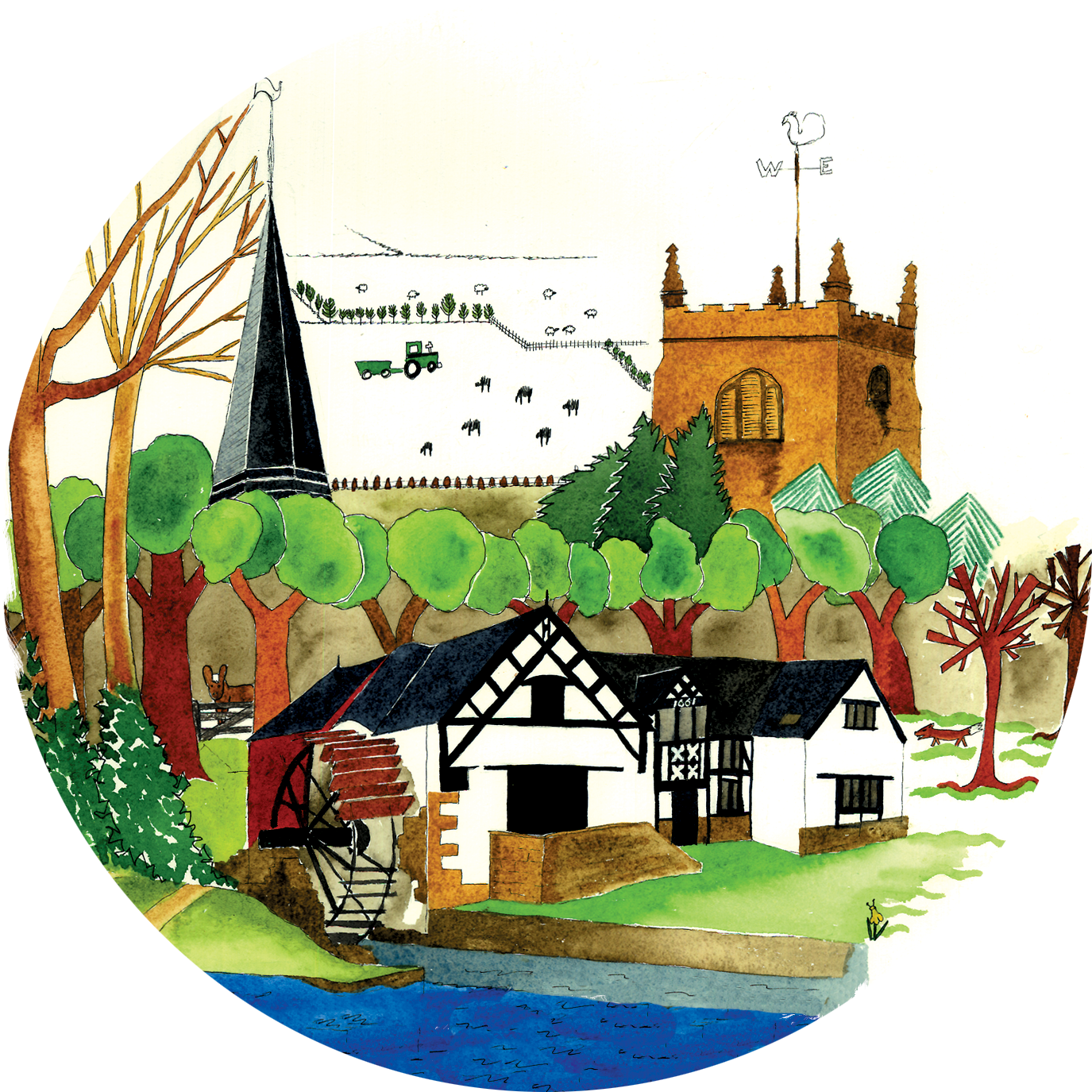The map shows an outline of our walks followed by a brief history of some of places that you might come across during our walks. The information is adapted from the original RECAP Heritage Walks leaflet.
Use the box/arrow icon in top left corner of map bar to switch walks on/off.
For detailed walking routes go to our Heritage Walks information page.
If you fancy a longer walk try our Longer Walks information page.
For details of eating and drinking places goto the Refreshments page.
1. Baptist Chapel
Cox Lane Baptist Chapel was a cottage converted for chapel use c.1809. The property was sold in 1989.
This white cottage featuring two crosses was the birthplace of “The Church of Christ” a world wide religious movement which still flourishes in the United States. It was visited in 1847 by Alexander Campbell, who led the creation of the movement in the USA. The cottage is now a residential house.
This was one of the homes of the Davies family who were one of the oldest families in the area since the time of the Fire of London from which they fled. The family also owned the large property near the Flash which is now of course the Pantyr Ochain Hotel. The family went on to establish a private Baptist chapel in Cam Yr Alyn which was originally part of the estate. The chapel sadly was closed and is now two houses, situated near the rebuilt foot bridge over the Alyn, on the old B5102 opposite Stoneleigh.
2. Trevalyn Hall
The present hall was built in 1576 for John Trevor, a descendent of the noble ancient Welsh family, replacing an earlier house of the Trevors dating back to the 10th century with the male line of Trevors ending in 1745.
3. Mill House
Situated on Trevalyn Manor Road. During the early days of Trevalyn Hall this used to be the main entrance lodge.
4. Rossett Mill
The building on the right as you leave the village is probably Rossett’s most famous due to it being sketched in 1795 by Joseph M.Turner (1775 – 1851). The mill’s history on this site dates back to around the close of the middle ages probably being built in 1474 during the reign of Edward IV when it was known as “Upper Merford Mill”. Early surviving records date it as 1544 and being rebuilt in 1588, which predates the inscription of 1661 found on the centre gable end; probably made to mark an addition to the building at that time. The Lewis family worked the mill for many generations until 1959 when the mill stopped grinding corn after an impressive 475 years’ flour production.
5. Crown Mill (Marford Mill)
The mill on the left as leaving Rossett is recorded in the Domesday Book: ‘In Exestan Hundred there is a mill yielding four shillings’. This mill in ‘Alentone’ (Allington) was the original mill in Rossett, known as “Lower Merford Mill” and must have existed before the year 1066.
The old mill was destroyed by fire in 1791 and was replaced with the present building. It is not known when this water mill stopped grinding corn, but in 1972-73 was saved from dereliction and converted into offices. It is currently the headquarters of the British Association of Shooting and Conservation (BASC).
6. Presbyterian Church
This was built in 1875 to replace the Chapel in Gun Street which had become too small. The former Calvinistic Methodist chapel in Gun St (7) was built in 1811, by 1998 the Chapel had been converted into two houses.
Mr Alexander Balfour, industrialist and founder of The Balfour Institute in Liverpool, was a local resident. He invited Mr. D.L. Moody the Chicago evangelist to come over and lay the new church’s foundation stone which can be seen at the front of the building. Quite a journey in those days just to lay a stone.
The Rossett Presbyterian Chapel was built in 1877, to the design of architect John Douglas of Chester, in the Gothic style of the gable entry type.
8. Rossett Hall
A house on this site was mentioned back in 1672 and was always known by name ‘The Rossett’. The present hall was built in 1750 for a Mr James Boydell. It has now been converted into a hotel and still retains interesting interior design features.
The son of a land surveyor, John Boydell made his fortune in engraving and publishing in London and used his wealth to build Rossett Hall in 1750 as a Welsh retreat for his family. Boydell was appointed Sheriff of the Hawarden estate near to Rossett and went on to become an Alderman in London and later became Mayor of London in 1790.
Lord Nelson apparently courted Emma Hamilton at Rossett Hall when visiting Hawarden.
9. Cam yr Alyn Lodge
Burton Road adjacent to the lodge used to be the main entrance with large wrought iron gates to the 15th century Cam yr Alyn (10). That house was replaced in 1763 and rebuilt in a more elevated position above the flood level. The 18th century Cam yr Alyn is set back across the field opposite. The lodge still stands to the present day but is now set in a “U” bend due to the re-routing of Burton Road when the by-pass was constructed.
11. Balls Hall
This farmhouse dates back to 1650 and is steeped in history such as when Mr Thomas Ball, High Sheriff of Denbighshire, took part in the Siege of Chester (1651-2).
12. Trevalyn Farm
This farm dates back to mediaeval times with a date for building an extension in 1588 for a Mr John Meredith. Internal features include a panel inscribed with a moon phase in an eight pointed star and lettering I.N.R.I. (King of the Jews). This could mean that the Merediths were of Jewish faith. An unusual machine was discovered by builders while carrying out work to the Inglenook. This turned out to be a Smoke-jack which consisted of revolving blades which were driven by smoke and rising heat from the open fire, the device was then connected to a cog which turned the spit that turned the attached food being cooked over the open fire. The device was presented to Wrexham Museum where it is on display for all to see.
13. Griffin Inn
This was a thriving farm in the mid 19th century when it was acquired by Wrexham’s Island Green Brewery and part was converted into an Inn. It provided the dual role of pub and farm, having extensive land and outbuildings. The husband ran the farm while his wife ran the Inn.

